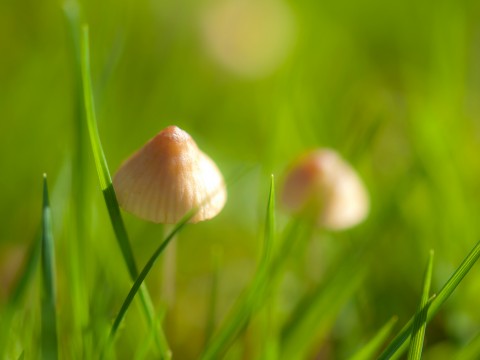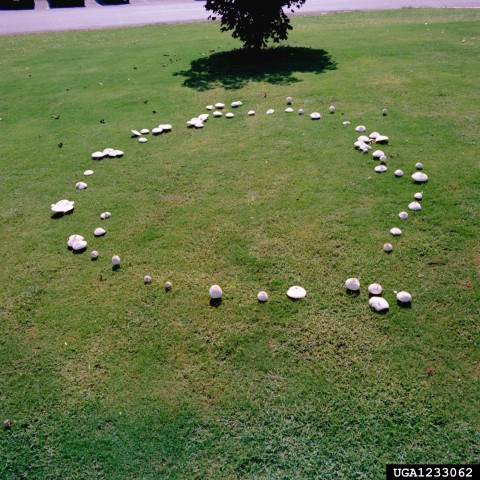
William Warby photo
After it rains, mushrooms may pop up in your lawn or garden beds. Don’t panic!
Some of our clients are concerned when they see mushrooms sprouting in their yard. They want to know:
- Are they harmful to my children or pets?
- Are they associated with a soil disease?
- How do I get rid of them?
In most cases, the mushrooms are completely harmless, and they provide concrete benefits to your yard and plants. If you have children or pets, it’s best to err on the side of caution and remove the mushrooms.
According to Michael Kuo at MushroomExpert.com, there are two types of beneficial mushrooms:
- Saprobic mushrooms help decompose dead organic material. Their mycelia chew up fallen leaves, dead blades of grass, woody debris, dead rootlets, and so on, returning this material to the soil. Imagine what would happen if nothing decomposed in your yard or garden: stuff would eventually pile up sky high! Yes, you can remove dead organic matter yourself–but your rake merely carries leaves away, rather than breaking them up into natural, soil-enhancing particles.
- Mycorrhizal mushrooms are involved in symbiotic relationships with plants and trees. The plant’s rootlets are surrounded and protected by the mushroom’s mycelium, which helps the plant absorb water and nutrients; in exchange, the fungus gets sugars and amino acids. Most trees cannot survive without mycorrhizal partners from the fungal world.
Not all mushrooms are benign. Some mushrooms grow from harmful fungi.

Armillaria root rots. Linda Haugen, USDA Forest Service, Bugwood.org.
Armillaria is a root rot that has honey colored mushrooms. This fungus is a naturally occurring in the Northwest. Armillaria root disease is the most common and most widely distributed forest root disease in Oregon and Washington. In western Washington, it is primarily found in trees that have been stressed. Find out more about armillaria from the US Forest Service.

Fairy ring. Clemson University – USDA Cooperative Extension Slide Series, Bugwood.org
Fairy ring is common in lawns. The mushrooms are visible in spring and summer. The only control method is to remove the mushrooms when they appear to prevent the fungus from spreading. We recommend watering deeply and infrequently, along with moderate fertilizer application. Typically, fairy ring is not detrimental to lawn health.
To find out more
If you have a serious interest in mushrooms and fungus, a good field guide for the amateur mycologist is Mushrooms Demystified by David Arora. For local mushrooms, a good field guide is Mushrooms of the Pacific Northwest by Joe Ammirati and Steve Trudell. Or find a list and photos of edible mushrooms on the Northern Bushcraft website.

can I still fertilize the lawn I use an organic.
It’s a bit late to use an organic fertilizer. The organisms need warmer temperatures to work. You could use a slow-release fertilizer now or wait until May for the organic.